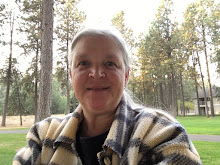- Leonardo da Vinci, circa 1500s
Nothing short of magic is how I see the wonders of what my little workers will do with the likes of manure, leaves, shredded newspaper, and what we call garbage.
But, of course there is more than magic to it, actually it is science. And in reality it is more than one science - microbiology, ecology, soil science and agronomy.
Recently, soil ecology has developed to the where the lid on the black box of underground processes can be opened and we can try to comprehend the intricate equation that the symbiotic relationships between plants and micro-organisms creates.
Dr. Elaine Ingham is widely accepted as an expert in soil biology. Ingham's message has been summed up by one author in this way:
- "Life on earth is sustained by a complex underground ecological system - the soil food web."
- "Through ignorance, we've disrupted the food web, in particular with ill-advised farming and gardening methods."
- "We can return the food web to health by restoring the soil biology." - Bart Anderson
______Here's a view of the soil the way Dr. Ingham sees it______
 The Soil Food Web: Eat and be eaten.
The Soil Food Web: Eat and be eaten.
__________________________________________________
The following information is taken from an excellent article at:
http://www.energybulletin.net/23428.html
Soil food web in brief:
- Soil food web - basis for life on the land.
~Breaks down dead plants and animals and recycles nutrients.
~Numbers and varieties of organisms are staggering.
~Reproduction rates are high (especially bacteria), and populations tend to boom and bust with different levels of oxygen, nutrients, heat, pH and water.
~Complex ecological relationships. - Soil food web is composed of several classes of organisms.
~Plants - roots and organic matter from plants.
~Bacteria and fungi - many varieties and functions. Most are decomposers, while many others are mutualists.
~Other members of the food web - protozoa, nematodes, arthropods, earthworms and higher predators.
~Predators eat other organisms and make nutrients available. - Soil food web is important for plant growth:
~Builds soil structure.
~Stores nutrients and releases them in forms plants can use.
~Protects plants against diseases and pests.
~Can tie up salts and harmful chemicals.
~Provides resilience and adaptation to changing conditions. - Some bacteria and fungi form mutualistic associations with plant roots. Both plants and micro-organisms benefit.
~Plant roots exude proteins, sugars and carbohydrates ("cakes and cookies") which attract beneficial micro-organisms.
~Nitrogen-fixing bacteria inhabit the roots of leguminous plants.
~About 80% of world's plants have symbiotic relationships with fungi (mycorrhizae). - Ratio of bacteria to fungi is different for different plant communities.
~Bacteria-dominated in early succession communities (bare earth, weeds, vegetables).
~Fungal-dominated in late succession communities (shrubs, trees, old growth).
~Equal balance of bacteria and fungi for most row crops and garden flowers.
~Bacteria/fungal ratio can be changed to favor different kinds of plants. - Soil food web is degraded in disturbed land.
~Enemies of the soil food web: compaction, tilling (turning), pollution, pesticides, synthetic fertilizers.
~Degraded food web invites pests, disease and nutrient problems.
~Chemical solutions aggravate the problem.
~Need to restore and enhance the soil biology. - Monitoring soil biology.
~Ingham advocates a "direct count" method, in which individual organisms in a sample are counted under a microscope.
~The result is a report on the numbers/biomass of different classes of organisms estimated to be in the sample.
~These numbers give indication about the health or problems with the soil. For example, a high number of ciliates (a group of protozoa) indicates anaerobic conditions.
~Many problems can be solved or alleviated by applying compost or compost tea, according to Dr. Ingham. - Compost
~Aerobic good, anaerobic bad. It should not stink (stink=anaerobic).
~Three methods discussed: thermal (hot), worm, and static (backyard).
~The balance between fungi and bacteria can be controlled by different feedstocks and methods.
~Monitoring compost quality is important - all composts are not created equal. - Compost tea is a convenient way to apply compost.
~Actively aerated compost tea (AACT) is what Ingham studies and recommends.
~Other compost teas and liquid amendments exist (some anaerobic).
~Process
>Good compost.
>Good (potable) water without chlorine or chloramine.
>Good brewing machine, easy to clean. Ask manufacturer for data.
>Appropriate temperatures
>Appropriate food for desired organisms
>Brewing times variable (about 24 hours)
>Prompt application.
I invite you to read more about it at the link below. The article is extensive and full of excellent information.
http://www.energybulletin.net/23428.html
See VermiCulture Northwest for the Tea Brewer I recommend.
What's important to remember is that no one factor is going to be a cure-all for whatever your problems might be. And like fine wine and intimate relationships, all good things take time.
Dr. Ingham advises there are limitations to compost tea:
Compost tea is not the end all "silver bullet" for all the problems that have developed in your yard over the years. Other practices, such as organic fertilizing, soil amending, mulching, aeration, etc., are also important to build and sustain a healthy yard and garden. The reality of it is that the soil, environmental and prior chemical condition of your yard all effect the overall health.
Take the time to read the above article and take the next step in taking care of your world.
Happy Worming,
Christy
www.vermiculturenorthwest.com
www.motherearthsfarm.com






No comments:
Post a Comment